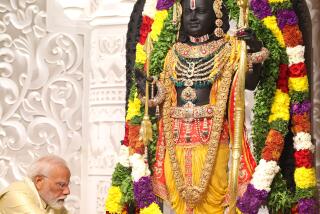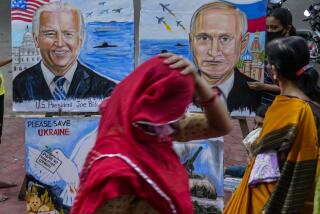All lines lead to Delhi
Shortly before the fall of the vast, wealthy Mughal reign -- the one that managed to generate one-fifth of the world’s wealth in 1600 and gave us the anglicized word “mogul” -- a leader is said to have shrugged off an impending foreign invasion by saying, “Dilli door ast,” or “Delhi is far away.”
It’s quite an unusual way of characterizing the seat of one’s empire, especially when compared to the well-known, proud proverb, “All roads lead to Rome.” But India -- the country and, more aptly, the idea of the country -- has always seemed distant, not just to orientalizing outsiders but to Indians themselves. Sixty years after it declared independence from the British, though, that may be changing, for better and worse.
“Dilli door ast,” taken literally, simply meant that it took a while for would-be conquerors to make the trek to the city, in India’s central northern region, far from borders that bulged with mountains. But the shah, and every ruler or leader of India since, may not have appreciated its eventual metaphorical implication -- that “government” of such a place was impossible; that no system could possibly exert authority over such a vast land and populace, where dialects and religious and social customs were too numerous and entangled to count accurately.
British rule, as both imperial apologists and anti-colonialists must agree, helped make Delhi less distant, establishing transportation infrastructure, a rapacious tax system and a broad census. Government became a much more tangible presence than it had been under prior rulers, and without that proximity, Indians may never have been inspired to revolt.
Still, immediately after London’s hastily rigged departure (adjudicated by British lawyer Cyril Radcliffe, who had never visited South Asia but still managed to split it apart, essentially over lunch), pessimism ran high that India would splinter, that a center simply couldn’t hold and would constantly inspire revolt (some say it never stopped). But India fervently held on to its democratic system despite periodic wars, ongoing internal rebellion, poverty and corruption, and a two-year state of emergency that saw severely curtailed civil liberties.
Today, it’s undeniable that Delhi has consolidated its power. Massive infrastructure, education and affirmative-action-style programs have brought the stamp of central government (if not actual progress) to rural villages. If nothing else, technology and particularly television -- featuring soap operas serializing the screwy lives of the middle or higher classes alongside poor kids competing on one of the country’s numerous national talent shows -- has brought the vast income and lifestyle gap into Indian living rooms, whether marble- or dirt-floored. And the government’s periodic border build-ups opposite Pakistan (a tendency that seems to be, at last, on the wane) and internal crackdowns against opposition groups and minorities also underscore the point: Delhi isn’t far, and Delhi may be watching you.
And Delhi has never been less far from the U.S. After decades of non-alignment, followed by an explicit tilt toward the Soviet Union and still later by punishing U.S. sanctions after India’s 1998 nuclear tests, the two countries have close political and trade ties. The most recent and controversial outgrowth of the new relationship is a bilateral that, critics say, rewards India for refusing to sign nonproliferation agreements. And, also recent and controversial, is the brain-drain-plugging phenomenon of outsourcing. “Dilli door ast” may one day be replaced by a paraphrase of the above proverb, if it hasn’t been already: All phone calls lead to India.
Swati Pandey is a researcher for The Times’ editorial page. Send us your thoughts at [email protected].
.
More to Read
A cure for the common opinion
Get thought-provoking perspectives with our weekly newsletter.
You may occasionally receive promotional content from the Los Angeles Times.










